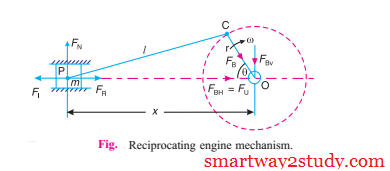EXERCISES
1. Define Balancing? Write a short notes on Static Balancing? and Dynamic Balancing? State necessary conditions to achieve them?
1. Define Balancing? Write a short notes on Static Balancing? and Dynamic Balancing? State necessary conditions to achieve them?
2. Why is balancing of rotating parts (or masses) necessary for highspeed engines?
3. Explain how a single revolving mass is balanced by two masses revolving in different planes?
4. Explain the method of balancing a single rotating mass by another single rotating mass in same plane?
5. Explain how the different masses rotating in different planes are balanced?
6. Explain the method of balancing of different masses revolving in same plane?


